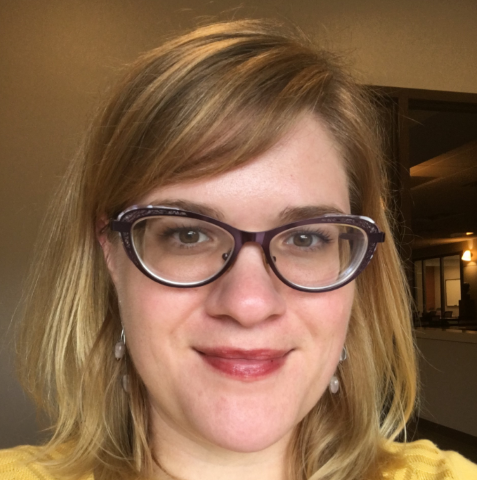 Ableism and Universal Design
Ableism and Universal DesignLindy Smith, Head of LaBudde Special Collections
Many aspects of our identities are fixed, but some change over time. Disability can be both. Some people are born with disabilities and some develop them over time. Some people have disabilities for their entire lives and for some people they are temporary. Regardless of how you come to disability, it’s likely that you will experience it in some way at some time in your life.
Some people are hearing, some people are Deaf. Some people use their feet and legs to navigate the world, some people use wheelchairs, prosthetics, and other mobility aids. Some people are neurotypical, some are neurodivergent. Neither is objectively better or worse, they’re just different. But the people in the first groups can generally navigate spaces more easily as they’re considered “normal” and spaces are built to accommodate them This is how marginalization works: a group with power decides where to draw lines of acceptability and those outside those lines have to work harder to fit in. Like other marginalized identities, disability has a disproportionate impact on some people because of intersectionality.
We use language, policies, and built environments to distance ourselves and turn people with disabilities in the other, something we hope we will never become. Ableism is the assumption that what we have collectively decided to consider “normal” is desirable and privileged and anything outside of that narrow definition is wrong, something to be mocked or, at best, corrected. But what if we shifted that perspective?
Here’s an interesting thought exercise: choose a disability. Now flip it so that instead of the world being built to exclude people with that disability, our built environment, policies, and social supports are structured around that disability as the norm. What would change? Would other people be inconvenienced or excluded? Can you come up with solutions to those inconveniences or exclusions that are more equitable to everyone from this opposite perspective? We have chosen to make stairs the default means of moving from one level of a structure to another instead of ramps or other solutions (elevators are both expensive to install and maintain and subject to mechanical failure). We have chosen to privilege the printed word for the dissemination of academic scholarship even though people with any level of vision could learn to read Braille and many of us now have easy access to sound recording and playback technologies. We create and enforce policies in our work even though they put some students and colleagues at a disadvantage unless they’re willing to request an accommodation (and then we sometimes complain about having to change our habits).
Universal Design is one way to approach policies and environments that makes them more accessible to all people. It reduces the need for accommodations and self-disclosure regardless of physical ability and neurodivergence. It also improves accessibility and quality of experience for everyone. More specifically, Universal Design for Learning adapts UD principles for use in the classroom.
The current COVID-19 pandemic has been and will continue to be a mass-disabling event. So far there have been disappointingly few permanent or even temporary structural changes in response to COVID, though there have been huge leaps forward in medical technologies to prevent and treat the active disease (if you are able to get vaccinated, please do!). Due to increased demand, web conferencing programs like Zoom have added more accessibility features like Live Transcription which provides automated captions.
Automated captions are a good example of an accessibility measure that is useful beyond its target audience. They are meant primarily for users who are Deaf or hard of hearing, but they can also help hearing participants. If you’re pulled away from a meeting for a few minutes, you can quickly review the transcript to catch up. If you are not fluent in the language of the meeting, it can help you understand the content better. How often have you been collectively drafting a piece of writing and wished you could capture that thing you just said perfectly and then immediately forgot? Live Transcription to the rescue. There are endless other examples of this.
You may have noticed that I used “we” throughout this column because even though I identify as disabled, I am not immune to ableism. There are many patterns of thought around this that are deeply ingrained and that I must actively unlearn. If you notice some of these impulses in yourself, that’s great. Noticing is a good place to start. And now that we know better, we can do better. We need to work toward acknowledging and celebrating our differences without assigning these values of good and bad that result in different outcomes for some people as compared to others.